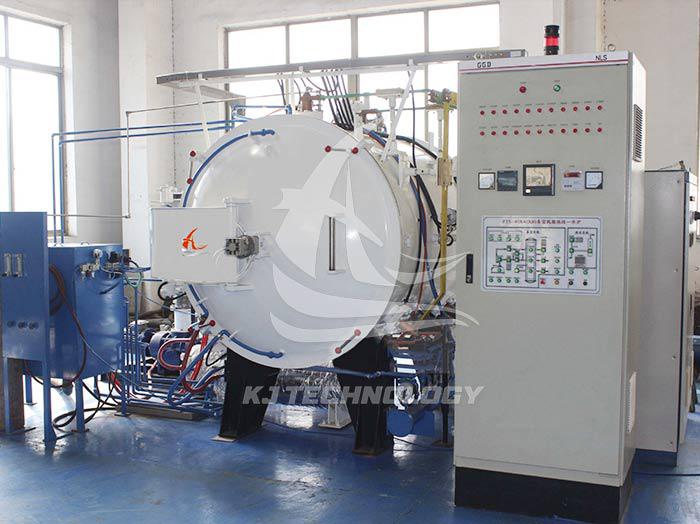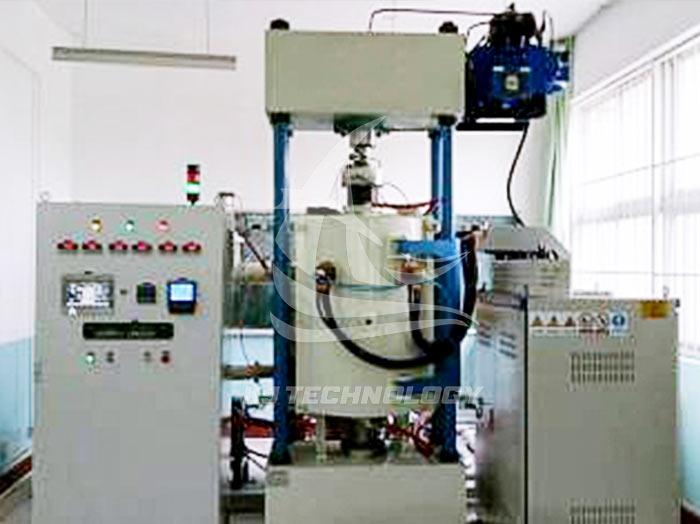Advantages of vacuum graphite high-temperature furnace
 11-06-2025 Author: KJ technology
11-06-2025 Author: KJ technology
The advantages of vacuum graphite high-temperature furnace are mainly reflected in the following aspects:
1. Excellent high-temperature performance
Ultra high working temperature
The maximum temperature of the vacuum graphite high-temperature furnace can reach 2500 ℃, and some models can even stabilize at 2800 ℃, far exceeding traditional heating equipment. This high temperature capability enables it to meet the highly demanding process requirements for material properties, such as carbon fiber graphitization treatment, graphite purification, etc.
Uniform heating and rapid temperature rise and fall
Graphite heating elements have excellent thermal conductivity, capable of rapid heating and cooling, and uniform temperature distribution. For example, some models have a faster heating rate to ensure that the material is uniformly heated at high temperatures, avoiding quality issues caused by local overheating or excessive temperature gradients.
2. Vacuum Environment and Atmosphere Control
Prevent oxidation and pollution
The vacuum environment (with a maximum vacuum degree of 5 × 10 ⁻³ mbar) effectively isolates gases such as oxygen and water vapor, preventing materials from oxidizing or being contaminated at high temperatures. This is crucial for the processing of sensitive materials such as semiconductors and advanced ceramics, as it can significantly improve the purity and performance of the materials.
Multi atmosphere adaptability
In addition to vacuum, the equipment can also be filled with inert gases (such as argon and nitrogen) or reducing gases (such as hydrogen) to achieve reactions such as oxidation-reduction and hydrogenation, meeting different process requirements. For example, in the field of graphite purification, when removing impurities through high temperature, a vacuum environment can prevent impurities from reacting with air to generate secondary pollutants.
3. Material compatibility and corrosion resistance
Advantages of graphite materials
The interior of the furnace is made of high-purity graphite material, which has excellent heat resistance (high melting point, low saturation vapor pressure) and chemical stability. Graphite has high corrosion resistance to most acids, bases, and salts, making it suitable for processing high-purity materials such as semiconductors and metal powders, and is not prone to thermal expansion or chemical corrosion at high temperatures.
Extend equipment lifespan
The graphite heating element and insulation layer have stable performance at high temperatures and are not easily damaged by oxidation or erosion, thereby extending the service life of the equipment. Compared to metal electric heating elements such as molybdenum and tungsten, graphite has a lower evaporation rate in vacuum and lower maintenance costs.
4. Efficient, energy-saving, and easy to operate
Energy-saving design
Adopting advanced heating technology and efficient energy-saving design to reduce energy consumption. For example, graphite heating elements have high energy conversion efficiency, reasonable equipment structure, and low heat loss, which helps to reduce production costs.
Automation control
Equipped with advanced automation control systems (such as PLC+WINCC visual interface) to achieve precise control of parameters such as temperature and vacuum degree. The operation interface is intuitive, powerful, and can pre store various process parameters, making it convenient for users to directly call and improve work efficiency.
Data recording and security protection
The equipment can record real-time temperature, vacuum degree and other data during the sintering process, and supports querying and exporting for subsequent analysis. At the same time, multiple safety protection devices (such as over temperature protection, thermocouple fracture protection, water flow monitoring, etc.) are equipped to ensure the stable operation of the equipment in high temperature and vacuum environments.
5. Widely applicable in various fields
new energy industry
Graphitization treatment of negative electrode materials for lithium batteries, which removes nitrogen, oxygen, hydrogen and other elements at high temperatures, promotes fiber structure ordering, and improves battery performance.
Special Ceramics and Chemical Industry
Suitable for sintering, crystallization and other processes of ceramic materials, improving the density, hardness and thermal stability of products. In the field of chemical engineering, it can be used to synthesize new materials or treat corrosive substances.
Electronics and Metallurgy
In processes such as semiconductor material annealing and metal powder metallurgy, precise atmosphere control and high-temperature environment are provided to ensure material performance.
Materials Science Research
As a commonly used equipment in laboratories, it supports experimental needs such as powder metallurgy and composite material sintering, and promotes the development of scientific research work.








